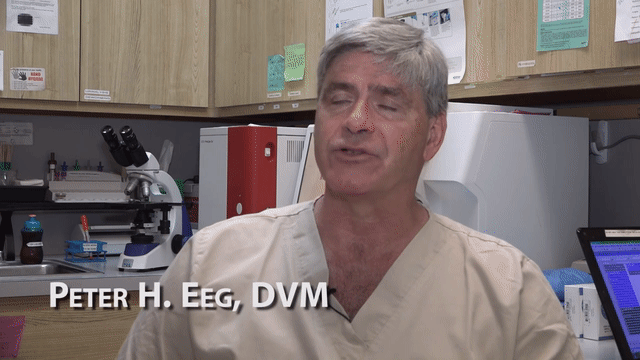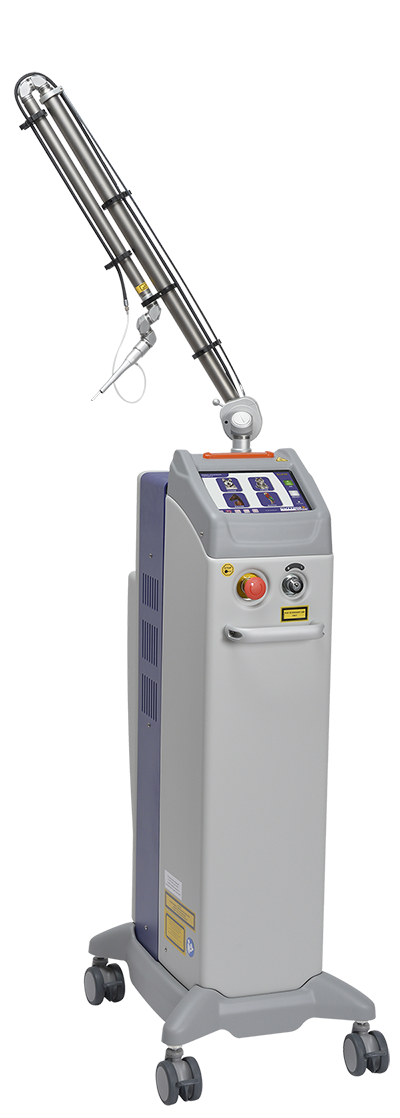CO2 Laser Surgery
Reduced pain, bleeding and swelling. Extreme precision. Faster recovery. The Cutting Edge CO₂ Laser Systems set a new standard for veterinary laser surgery.

Warning: Video of laser surgery. Viewer digression is advised.
Laser Surgery Overview
Cutting Edge CO2 Laser Systems set a new standard for veterinary laser surgery by combining advanced features with easy, maintenance‐free operation. Laser energy seals nerve endings and small blood vessels as it incises or ablates tissue.
Surgical lasers have become a very important part of Veterinary medicine. The advent of the surgical laser has improved the treatment of many disease states previously treated with a scalpel or electrosurgical unit.
The veterinary laser provides the surgeon with improved hemostasis while significantly reducing the pain and swelling due to its unique properties. Using endoscopic, laparoscopic, and other minimally invasive methods, fiber directed laser energy (Diode and Ho:YAG) has been used to treat diseases of the upper and lower GI tract, including benign polyps, gastric ulcers, and intestinal neoplasia.
For most general practitioners the CO2 generated wavelength of energy provides the greatest application in soft tissue cases with the least negative impact on surrounding tissue.
Diode generated wavelengths have more limited soft tissue handling parameters but have the advantage of being functional in a fluid environment or through endoscopic application.
Ho: YAG generated wavelength energy is used primarily for minimally invasive urological techniques for ablation of bladder, urethral, and prostatic pathological conditions in small animals.

Benefits of Laser Surgery
Veterinary laser surgery is recognized in human and veterinary medicine for the significant benefits it provides to both patients and surgeons. While several types of lasers are used for different applications, the primary device for soft tissue surgery in small and mixed animal practices is a carbon dioxide laser.
The benefits of the carbon dioxide laser are many:
Reduced Pain – The CO2 laser beam seals nerve endings as it cuts through tissue. This reduces the amount of pain the patient feels during and after surgery.
Reduced Bleeding – The CO2 laser beam cauterizes and seals small blood vessels as it cuts. This laser energy achieves hemostasis and provides the surgeon with a bloodless surgical field in most procedures.
Reduced Swelling – There is no physical contact between the laser and the surgical region, eliminating the tearing and bruising of tissue associated with traditional surgical methods. Lymphatic vessels are also sealed.
Reduced Infection – Laser energy acts as an antibacterial agent by producing high temperatures, effectively eliminating microorganisms.
Quicker Recovery – As a result of all of the above, laser surgery provides the benefit your clients will appreciate the most: a quicker recovery for their pet.
Testimonials




FAQs
The carbon dioxide (CO2) laser emits a colorless, infrared light at a specific wavelength of 10,600 microns, which has an extremely high affinity for the intercellular water of cells.
A summary of the benefits include:
- Less pain
- Less bleeding
- Less swelling
- Extreme precision
- Reduced risk of infection
- Quicker recovery
A laser is ideal for a wide variety of procedures for dogs, cats, birds, reptiles, horses and other animals. The most widely recognized procedures include but are not limited to the removal of cysts, tumors and warts, as well as specialized internal procedures.
